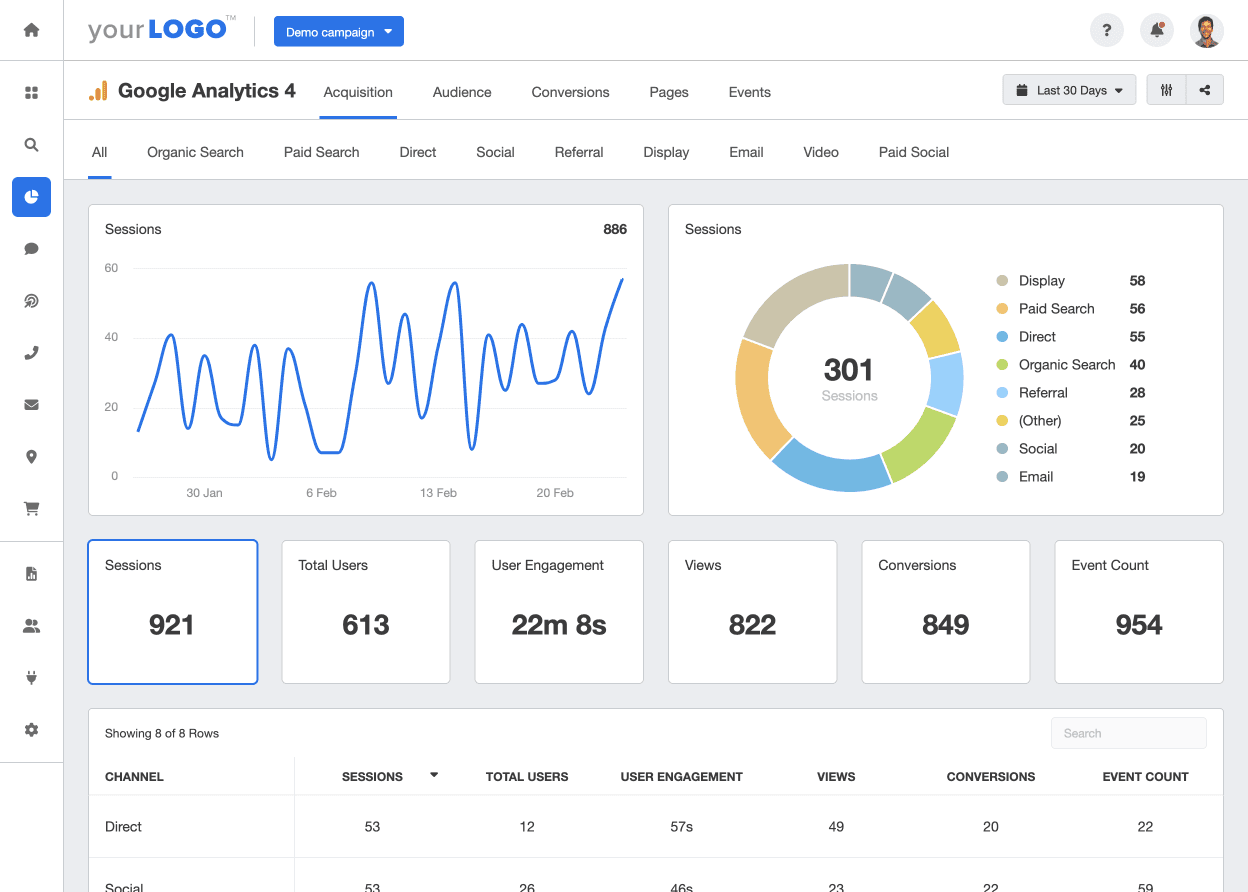Find Out the Secret Sets Off for When Does the Google Analytics Tracking Code Send an Event Hit to Analytics
Find Out the Secret Sets Off for When Does the Google Analytics Tracking Code Send an Event Hit to Analytics
Blog Article
Master Site Insights With Accurate Google Analytics Tracking Code
The efficient application of Google Analytics hinges on the precise execution of its tracking code, a fundamental action often ignored by internet site proprietors. This seemingly easy JavaScript bit, when correctly positioned, comes to be the foundation of information collection, supplying understandings right into user habits and site efficiency. However, obstacles can develop throughout setup, potentially skewing the data and causing mistaken decisions. Comprehending these details is important for making the most of the advantages of analytics. What are the usual risks that could undermine your monitoring efforts, and how can you guarantee accuracy in your approach?
Recognizing Google Analytics Fundamentals
Google Analytics is a necessary device for site proprietors and online marketers, supplying invaluable understandings right into user actions and site efficiency. At its core, Google Analytics gathers data regarding site visitors to a web site, permitting users to analyze metrics such as website traffic resources, user interaction, and conversion rates. Recognizing these basics is crucial for enhancing a web site's effectiveness and enhancing user experience.
The system uses cookies to track communications, taping data such as page views, session periods, and bounce rates. This details is accumulated and provided via customizable dashboards, allowing individuals to envision patterns in time. Trick efficiency signs (KPIs) can be monitored, such as the overall number of customers, brand-new versus returning site visitors, and the geographical circulation of the target market.
In Addition, Google Analytics offers segmentation attributes, permitting customers to isolate details traffic sources or customer demographics for more targeted analysis. By understanding these foundational components, website owners can make educated choices regarding material approach, marketing campaigns, and general website improvements. Eventually, comprehending Google Analytics fundamentals is essential for leveraging data to drive development and attain organization objectives effectively.
Establishing Your Tracking Code

Replicate the given monitoring code and paste it right into the HTML of your website. This ensures that the monitoring code loads prior to any type of various other material, allowing it to record data properly.
After installment, validate that the monitoring code is operating correctly by making use of Google Tag Assistant or the Real-Time records in Google Analytics - when does the google analytics tracking code send an event hit to analytics?. This step is essential to validate that your data collection is exact and energetic, establishing the structure for informative analysis
Typical Monitoring Code Issues
This may happen when the monitoring code is put in the wrong section of the website's HTML, typically leading to insufficient or missing data. Additionally, having several instances of the monitoring code on a single web page can result in inflated metrics, as user communications may be counted extra than when.
An additional issue occurs from the use of advertisement blockers, which can avoid the monitoring code from carrying out completely, thus skewing information. when does the google analytics tracking code send an event hit to analytics?. Additionally, failure to configure filters properly can result in the exemption of essential website traffic sources or the inclusion of undesirable recommendation spam, distorting the data collected
Internet site owners may also overlook the significance of monitoring code updates, especially when migrating to Google Analytics 4 (GA4) from Universal Analytics. Lastly, inadequate screening before launching changes can result in undiscovered mistakes in the tracking code, even more complicating data integrity. Addressing these typical concerns is critical for making sure precise monitoring and insightful analytics.
Analyzing Website Data Efficiently
Precise data collection is only the initial step in leveraging Google Analytics; the real value depends on properly analyzing that data to drive enlightened decision-making. To attain this, it is necessary to recognize essential performance signs (KPIs) that align with your business goals. Emphasis on metrics have a peek here such as conversion rates, customer interaction, and web traffic resources, as these will give insights into customer behavior and the total effectiveness of your internet site.
Using Google Analytics' segmentation functions permits a much deeper understanding of your audience. By breaking down data into certain demographics, actions, and website traffic networks, you can uncover patterns and patterns that educate targeted approaches. Executing personalized reports and dashboards can streamline this procedure, making it possible for quick access to relevant information.
Additionally, frequently assessing data fads with time assists to identify anomalies and opportunities for improvement. Use visualization tools to existing information in an easily absorbable layout, facilitating more efficient interaction with stakeholders. Eventually, the Learn More Here capability to assess internet site information properly empowers services to make strategic decisions that improve customer experience, enhance marketing efforts, and drive growth.

Best Practices for Accurate Tracking
Applying reliable tracking techniques is critical for getting reputable data in Google Analytics. To make certain precise tracking, start by appropriately installing the Google Analytics tracking code on every web page of your site. This can be achieved through a tag manager or by straight embedding the code into the HTML.
Following, configure your Google Analytics account to exclude interior website traffic. This can be done by establishing filters that determine and remove sees from your organization's IP address, thus protecting against skewed information. Furthermore, make use of occasion monitoring to keep track of particular customer interactions, such as downloads or video clip plays, which standard web page views might ignore.
Routinely examine your monitoring setup to validate that all features, such as objectives and ecommerce monitoring, are operating effectively. Establish a have a peek at this website constant naming convention for your projects and occasions to facilitate simpler reporting and analysis.
Finally, consider leveraging UTM specifications for projects to obtain insights right into the performance of various marketing initiatives. By following these best methods, you can improve the precision of your information collection and evaluation, eventually resulting in even more educated decision-making for your site.
Verdict
Exact execution of the Google Analytics tracking code is important for mastering internet site understandings. By making sure the monitoring code is correctly positioned and consistently investigated, website owners can record crucial individual interaction information, therefore assisting in the identification of crucial efficiency indications. Efficient analysis of this information, incorporated with adherence to best methods, makes it possible for informed decision-making and the optimization of on-line strategies. Ultimately, a robust tracking structure enhances the capacity to drive involvement and boost overall website performance.

Inadequate screening prior to launching modifications can result in unnoticed errors in the monitoring code, further complicating data reliability.Applying reliable tracking techniques is critical for acquiring dependable information in Google Analytics. By ensuring the tracking code is correctly put and on a regular basis investigated, website owners can capture crucial customer communication data, hence promoting the identification of key efficiency indications.
Report this page